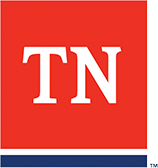Free New Online Toolkit – Arts Organizations at a Crossroads
From National Coalition for Arts’ Preparedness & Emergency Response –
Over the last year-plus, many arts and cultural organizations have found themselves at a crossroads of some sort. It’s not always clear how to go about weighing your options and making decisions in a proactive and thorough way.
Free and online, The Arts Organizations at a Crossroads Toolkit: Managing Transitions and Preserving Assets was created to guide arts leaders through three significant transitions you are likely to face during your organization’s life. Each of these ‘crossroads’ is addressed in a self-standing section of the Toolkit.
- Structural shifts
- Departure of key staff/leadership
- Creation of artistic and physical assets which deserve preserving
The hands-on guide includes practical tools, and stories and wisdom from organizations who’ve navigated transitions themselves including 10 Hairy Legs, the Aspen Santa Fe Ballet, and the Madison (WI) Children’s Museum.
Section A, Guidance for Making Legal and Structural Choices, walks you through the steps for making legal and structural choices: how to have the conversation with your staff and Board; what your options are including restructure, dormancy, merger or closure; how to assess your options and make the best decision for your organization and community; and the actual steps each option entails. This section can also be helpful if you are engaging in strategic or scenario planning.
Your people, and what they know, are your greatest asset. The most valuable knowledge isn’t captured in any job description; it’s the “deep smarts” founders and long-time staff have. But it’s all too easy to put off cross-training and capturing people’s knowledge until it’s too late. Is your team caught in The Time Trap – too busy to train a backup and then trapped, unable to take a vacation or break? Or is Founder’s Syndrome putting your organization’s long-term health at risk?
Section B, Protecting Your Knowledge Assets offers resources and ideas for creating an equitable and manageable cross-training approach, and a Knowledge Capture tool you can start using right away.
Don’t wait until a crisis or tipping point to begin protecting your history. You may be in a young organization, one that’s stable and flourishing, or at a challenging moment and considering dormancy or dissolution. Regardless, leadership means taking on both the opportunity and responsibility of protecting your artistic and institutional assets, and ensuring they continue to serve your mission and community.
Section C, Managing and Preserving Your Legacy, prompts you with small steps you can take now to protect your history and reputation, with cues from professional archivists, and arts organizations which have taken steps to protect their assets and reputation.
The Arts Organizations at a Crossroads Toolkit: Managing Transitions and Preserving Assets is written and developed by Mollie Quinlan-Hayes and published by NCAPER, the National Coalition for Arts’ Preparedness and Emergency Response. This project was produced by NCAPER with generous support from the National Endowment for the Arts to South Arts, the administrative home of NCAPER, and The Andrew W. Mellon Foundation.
The Toolkit joins NCAPER’s expanding library of resources. Recently, NCAPER published An Arts Field Guide to Federal Disaster Relief, for Arts Organizations and Businesses, Artists and Cultural Workers. The NCAPER Field Guide was created to help demystify federal disaster relief for the arts and culture sector by helping artists and arts organizations see what’s available, understand clearly what isn’t available, and decide if pursuing federal aid is a good use of time. The top programs of use to artists and arts organizations have been selected for inclusion.

